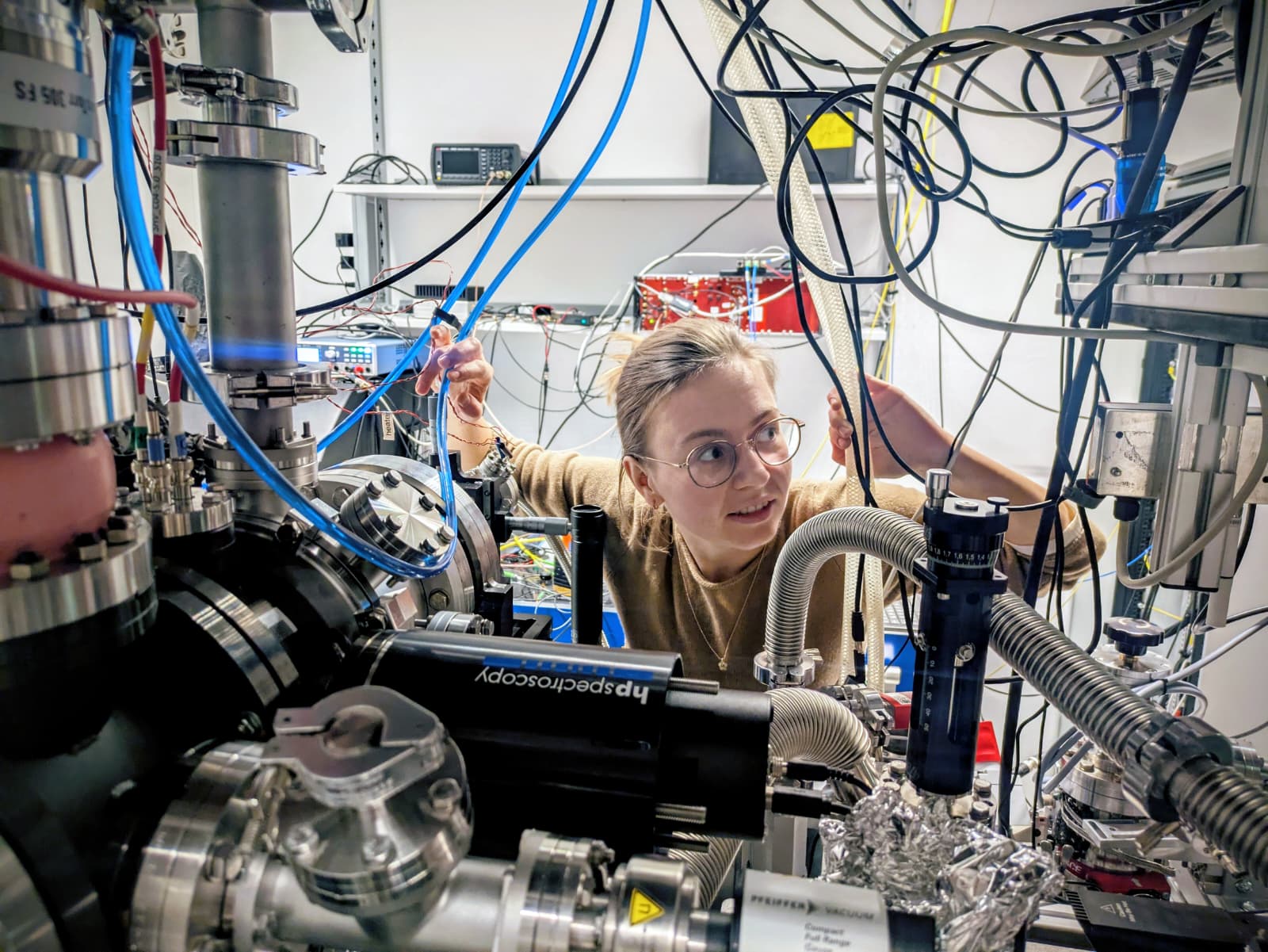Physicist of the Month
Are you a physicist and would like to introduce yourself and your research? Don't hesitate to write to us at chancengleichheit@oepg.at!
December 2025
Ira Morawetz, PhD student at the Atomic Institute of TU Vienna and winner of the Berta Karlik Poster Prize 2025
About myself and my research
My love for research and especially physics started back in high school where I was lucky enough to be taught by a very motivated and passionate physics teacher who organized an amateur astronomy group for his pupils. In this group I was able to have a peak into experimental physics research by performing luminosity measurements of variable stars. This experience made me fall in love with the subject, so studying physics was the obvious choice for me. I finished my master’s degree at TU Wien in 2024 and am currently pursuing my PhD in experimental quantum metrology at the Atominstitut of TU Wien in the group of Prof. Thorsten Schumm. Our goal is to develop a nuclear optical clock which can serve as a new ultra-sensitive tool to measure physics beyond the Standard Model. In contrast to optical atomic clocks, our clock transition is not an electronic transition but a nuclear transition. Specifically, we use 229Th due to its uniquely low-lying first isomeric state.
What I enjoy most about my job is solving new problems every day and working together with my amazing team of colleagues.
What can be done to achieve more equal opportunities in physics?
To provide equal opportunities for women in physics and other STEM fields, it is vital to have positive female role models. This can help make the natural sciences a less intimidating environment for girls to get into. Furthermore, it is important to show aspiring physicists that not only exceptionally talented women might have a chance at success in this field. It is my experience as a relatively young researcher that these factors have an impact on the career choices that women make. For women already in the field it is important to have networks of other women to mutually support each other. This is especially helpful if one does not have immediate female colleagues.
Overall, I believe we should move towards making the sciences a less unfriendly environment for all people who want to start a family. Not only women would benefit from less volatile contracts and unsecure employment conditions.
Ira Morawetz has won this year's ÖPG Berta Karlik Poster Prize for young female physicists. If you would like to learn more about her and her work, you can find the link to her research group here and the link to her ORCID profile here.
